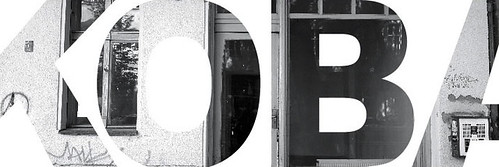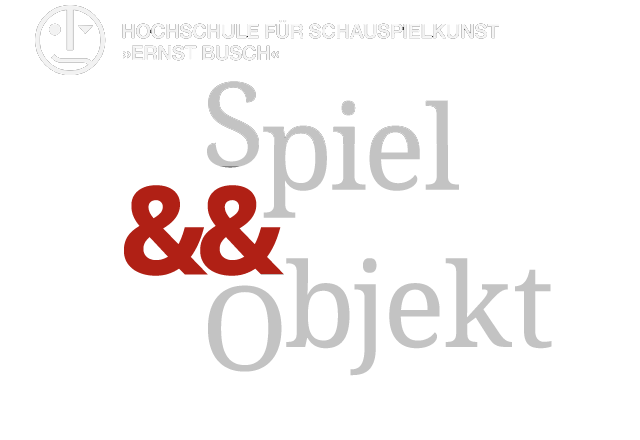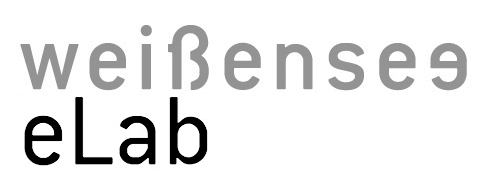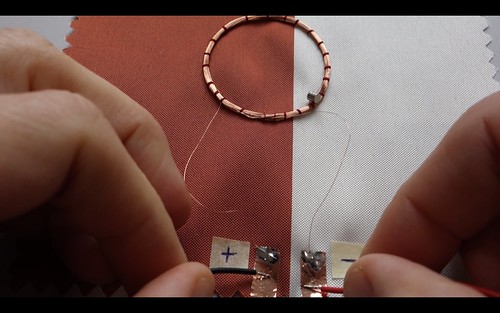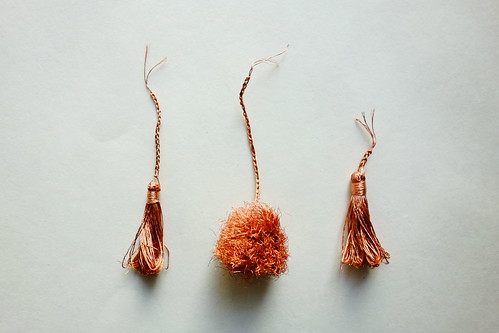Welcome to the KOBAKANT DIY Wearable Technology Documentation
Most Recent Posts
Three Perspectives

Sketching interactions for young audiences Young theater audiences enjoy participatory forms of theater that allow them to engage with content in interactive and playful ways. We want to get to know this young audience and understand how they engage with interactive technology and live actors in theatrical settings. Over the course of a 3-day kick-off […]
Playing with electronic textiles
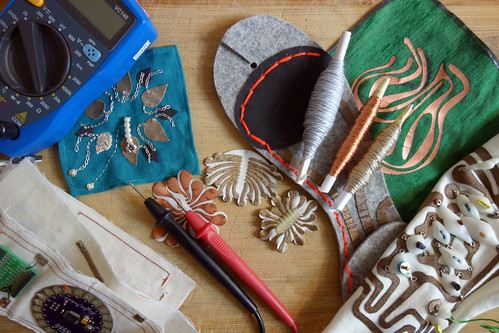
14+15.4.2023 at the Art and Work Education Conferences Tirol “material matters” This two-day workshop provides an in-depth introduction to the materials as well as design and didactic possibilities of electronic textiles. Participants will develop object-, body- and space-oriented projects involving textile sensors, circuits and sound, which will serve as examples for later use in schools. […]
RabbitControl on Bela
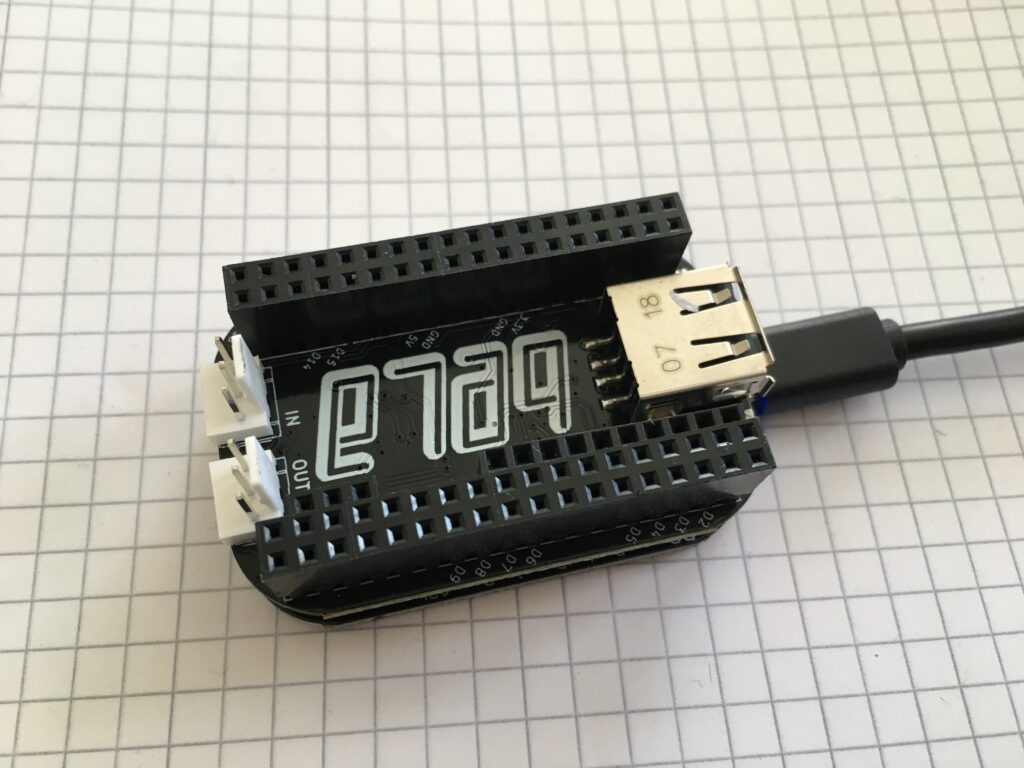
Bela Mini Board (https://bela.io/) is a super nice tool to read textile sensors, and generate sound on board. Bela can run Pure Data, and this is becoming my favorite toolset. One problem of working with Bela is that it does not have monitor, so you can not easily see in realtime what value your sensor […]
Rabbit Control Client on Bela
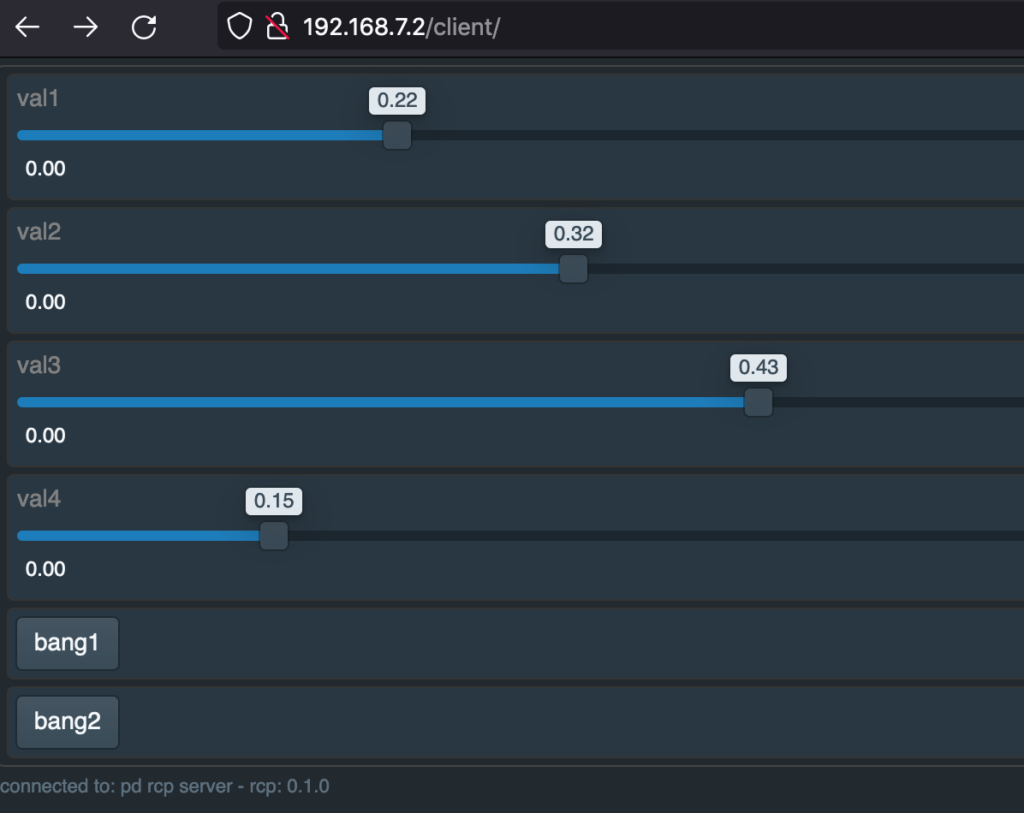
Since the Rabbit Control Client is hosted on the web, if you are offline (for example in network that is not connected to internet) you can not access the client. In this case, you can host the client directly on the Bela board. Download Rabbit Control client from here http://client.rabbitcontrol.cc/client.zip Connect Bela to your computer […]
Tone of the Things
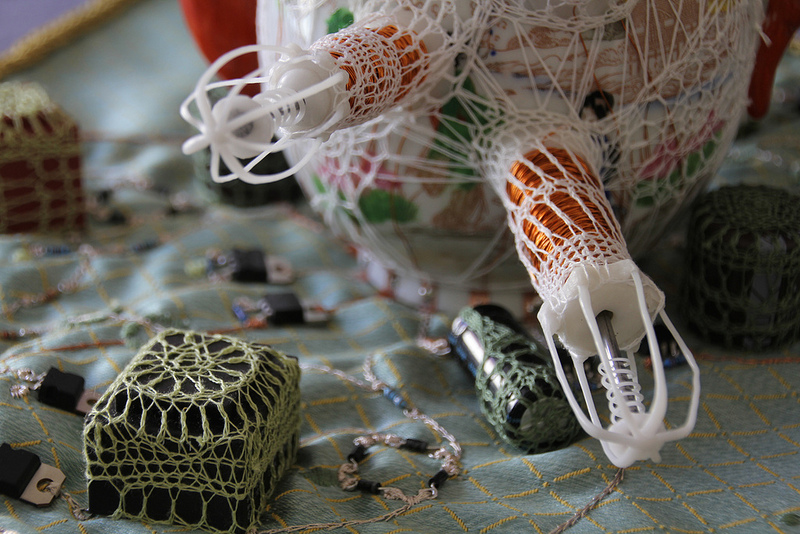
This is a part of the winter semester course 2022/23 at the Weissensee Art Academy Berlin. The workshop takes place on the October 24/26 at the eLab, KHB Berlin. ARDUINO 101 “Arduino is an open source computer hardware and software company, project, and user community that designs and manufactures single-board microcontrollers and microcontroller kits for […]
Wireless Workshop

TH 28.4.2022, 11-14:00 (3h) + FR 29.4.2022, 10-15:00 (4h) ((( This workshop is only open to S&&O students ))) This 2-day workshop aims to give an overview of a selection of wireless communication technologies good for sending sensor data between small devices and computers, and provides concrete examples for a subset of the selection. For […]
Sensitive Puppets

„I could never be on stage on my own. But puppets can say things that humans can’t say.“ – Nina Conti (born 25 August 1973) is a British actress, comedian, and ventriloquist. Dieser Kurs birgt Raum, Zeit und Material um spielerisch auszuprobieren wie Sensorik/Elektronik und Puppenbau zusammenkommen können. Wir werden eigene Sensoren aus Papier, Pappe, […]
Stitching Electronics | Woolly Noise
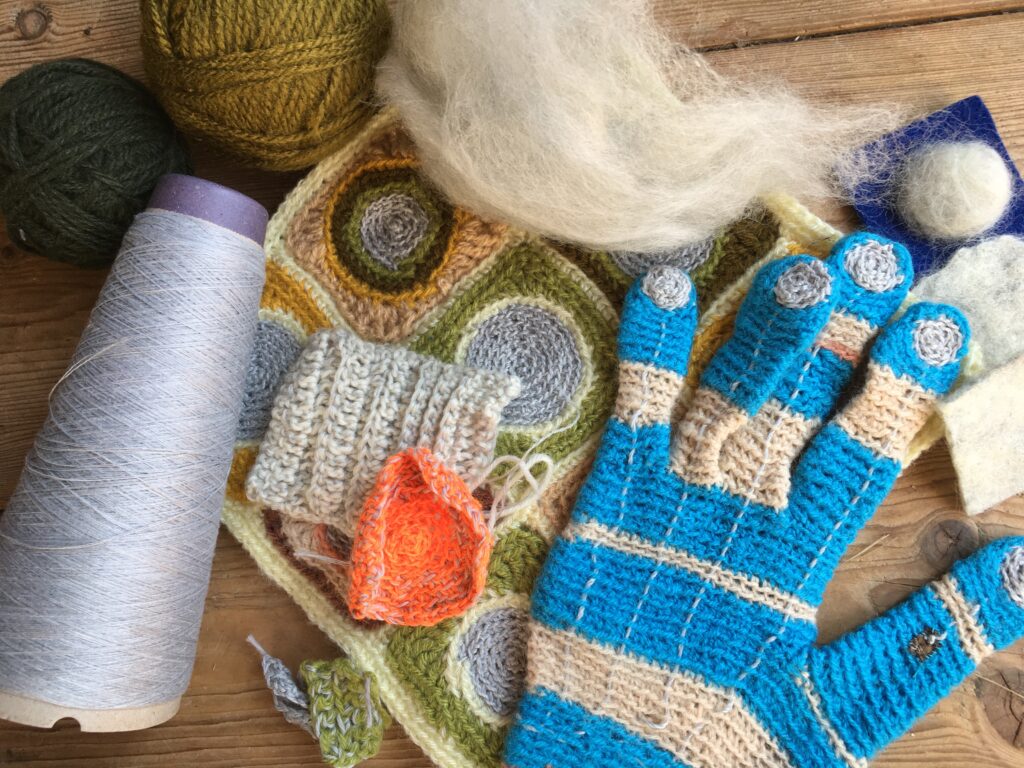
SVITAVA transmedia art lab, Brno, Czech, March 26/27, 2022 Meet the Material In this workshop, we use two resistive materials as our main materials. Both of them contains 20% of stainless steel fibers which are conductive, and 80% of non conductive fibers (wool or polyester). As the contain only 20% of conductive fiber, it has […]
Beautiful Circuits

a very short KiCAD workshop 9+10.3.22, 10-15:00 (it is possible to join only for the first day) Spiel und Objekt Ladenlokal Hochschule für Schauspielkunst Ernst Busch Zinnowitzer Str. 11 10115 Berlin This very short intro workshop to the free and open source Printed Circuit Board (PCB) design software KiCAD (Version6) focuses on how to design […]
Handedness
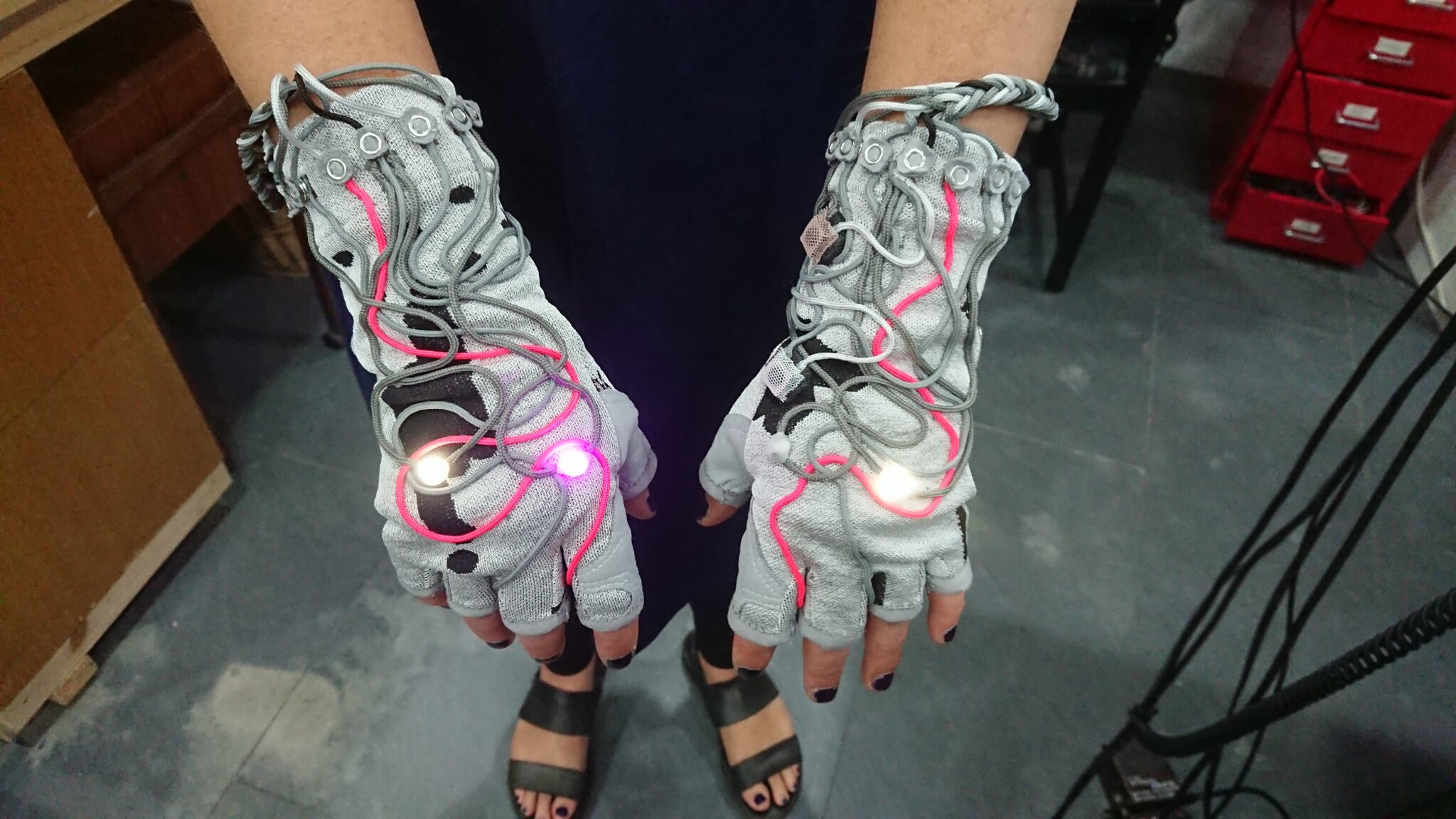
This is a 3 days hands-on workshop held on January 26-28 2022 at the Interface Culture, Art University Linz Austria as a part of a course Fashionable Technology. Schedule:Day110:00 – 11:00 meet the materials11:00 – 13:00 building textile sensors (digital/analog)13:00 – 14:00 lunch break14:00 – 15:00 Arduino intro (students who are not Arduino beginners can […]
dangle data gloves

photos >> https://www.flickr.com/photos/plusea/albums/72157713884362741 ideas for how to solve the sensing and connections to the sensors: knitting pattern for two gloves joined at the fingers: making-of:
Bend Sensor Glove
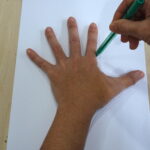
This is a quick way to make bend sensor embedded gloves. In this example, I embedded 4 sensors on finger joints, on Thumb, Index finger, Middle finger, Ring finger. I skipped pinky as it is hard to move it alone… (at least for me..) Materials: 2 sheets of 2 way stretch jersey/lycra about 20cmx20cm 1 […]
ETextile Tailoring

An attempt to describe a process of designing, prototyping, testing and producing etextile garments.
Meet the Materials : Note

This is a course note for the Soft Interactive Technology course at the Art Academy Weissensee Berlin. The course is normally given as a series of hands-on workshops, but due to our difficulty of meeting each other in physical spaces, it is developed as an online course for the year. It was first given in […]
MQTT client
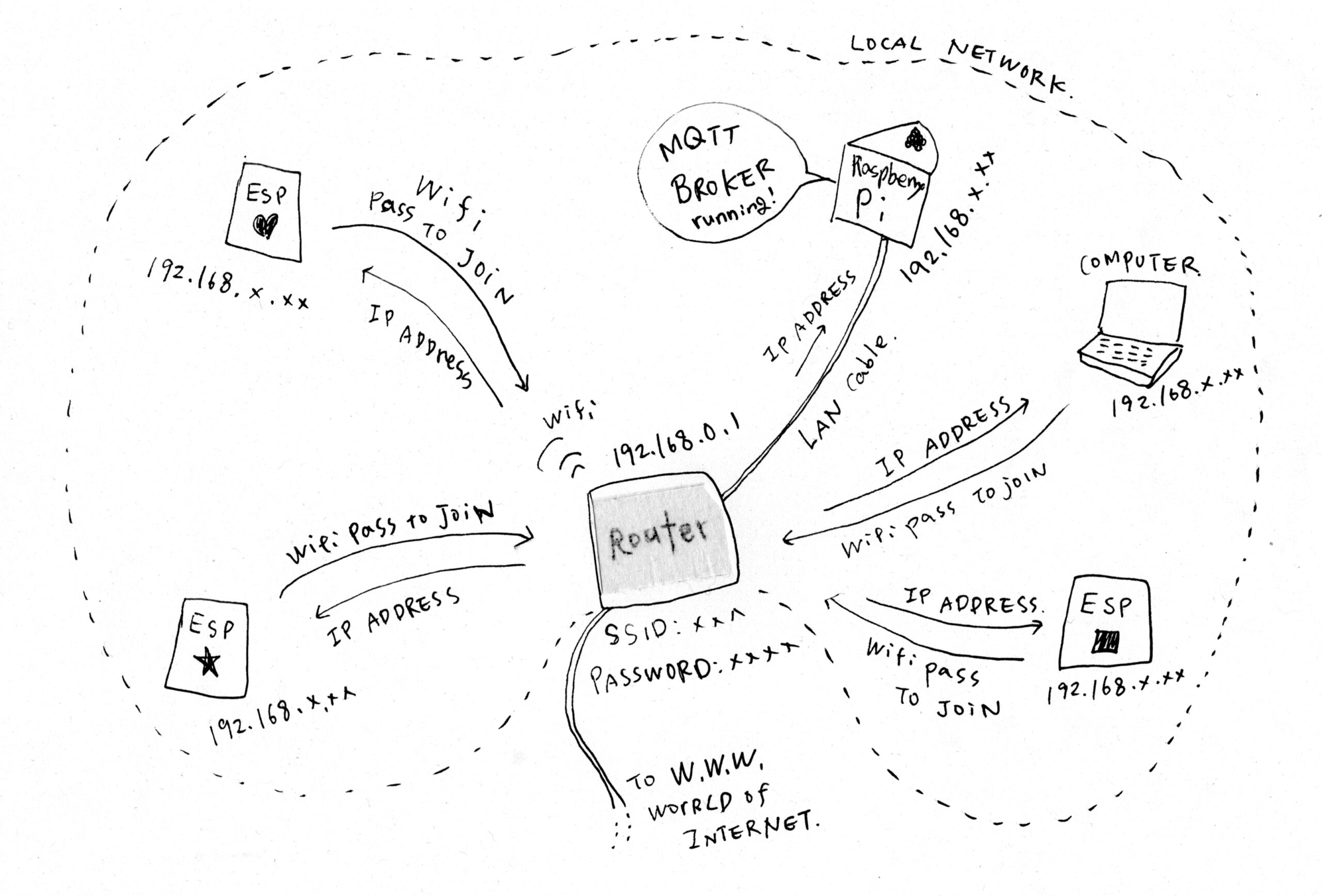
This post is a follow up to mqtt broker post. The devices that are connecting to MQTT broker (ESP, computer.. etc) is called “Client”, and on client side you will be running some kind of software that act as a MQTT client that publish/subscribe data to broker. For example, on ESPs, we used “espMQTTclient” library […]
Communicating Bodies
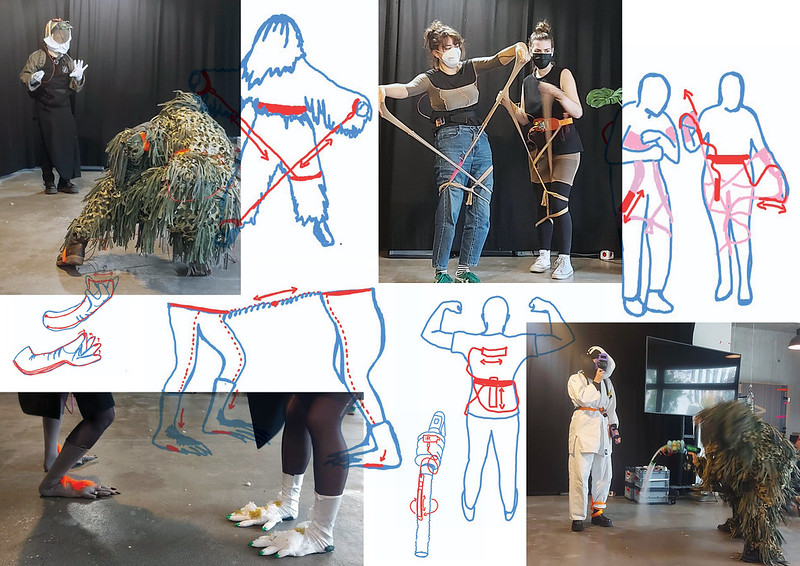
This two-week (5day) workshop brings together textile, costume and product design students from Weissensee University, and students from the MA program S&&O of the performing arts university berlin. Together we want to play with body language, textile sensors and sound. Given a new medium such as wearable technology, what new ways of communicating emerge? Screen […]
MQTT Brokers and Clients
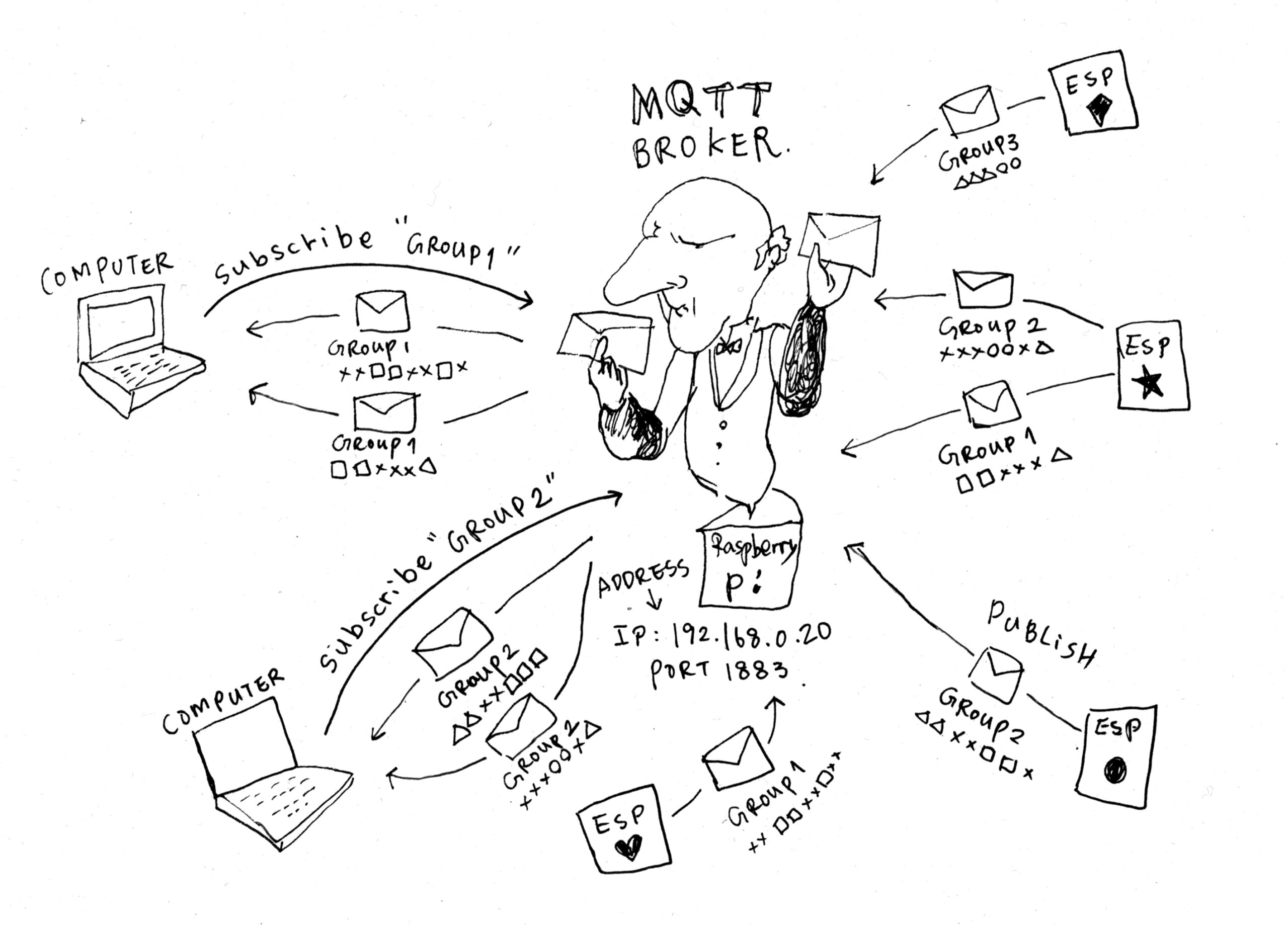
These are out notes from working with various MQTT Broker options, which we have used mostly to publish sensor data wirelessly from a Client running on an ESP32 Dev Module (programmed with Arduio) and then subscribe to this data from various other Clients: – another ESP32 dev module – a Processing sketch on a computer […]
Spaghettimonster
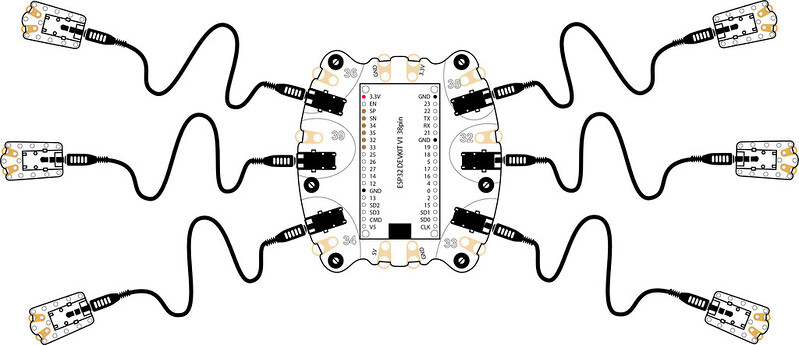
the spaghetti monster is basically the idea to use 3.5mm audio sockets and cables to make 2/3/4-way connections between the gpio pins of a microcontroller board and textile/wearable sensors & actuators mounted around the body. specifically a first instance of this idea was designed to breakout 6 analog pins of an ESP32 Devboard to connect […]
ESP octopus sewable breakout

A first quick version of a sewable breakout board for the ESP32 DEVKIT V1 38pin board. This board was designed in a bit of rush, so it is far from well thought-through and designed. photos >> https://www.flickr.com/photos/plusea/albums/72157719749335407
Paper Lazer Projector

An Experiment:-) Inspired by Vaclav and Bernhard’s DIY laser projector with speakers and mirrors project at PIFcamp 2021. Photos >> https://www.flickr.com/photos/plusea/albums/72157719708791131 Video taken in rush, showing the speakers playing the L and R channels of this sine-wave sample from youtube and a laser shining into one mirror, bouncing off the second and landing on a […]
Skin Sensor

Instead of using fabric as the base for the sensor, it is funny to use transparent medical foil for skin protection. it creates sensors that is proximate to skin like tattoos. I bought this medical foil at the local Apotheke (drug/medicine store) in Germany. I have also asked the Tattoo shops near-by. They were happened […]
Stocking Skin Stretch Sensor
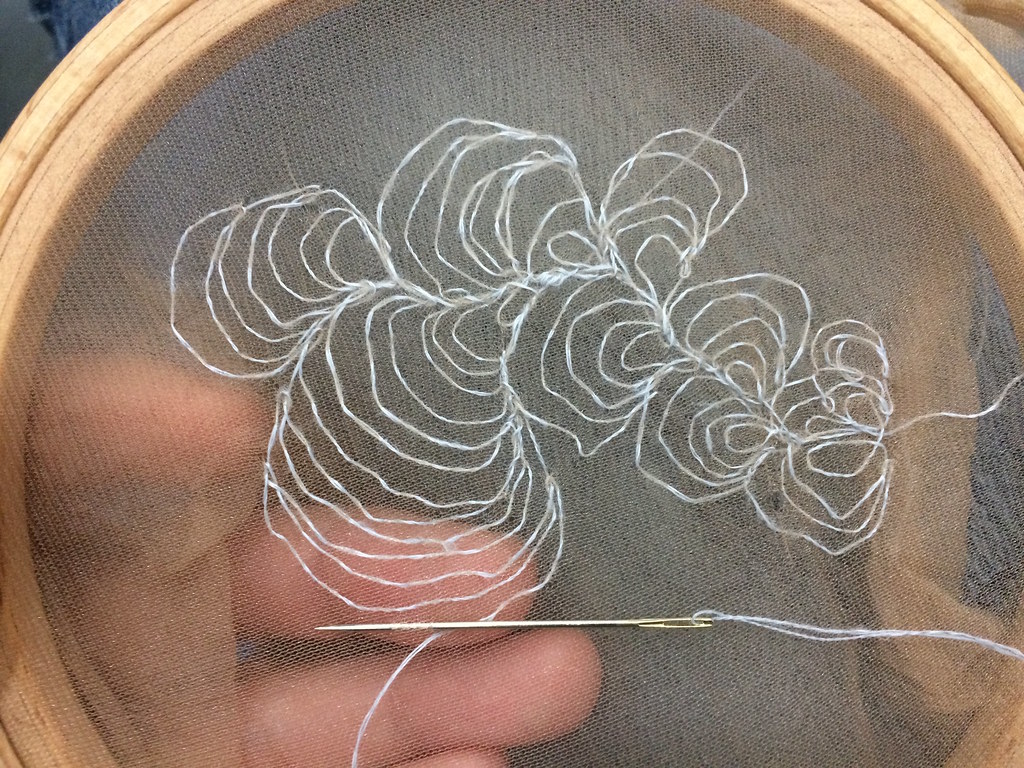
A stretch sensor made of skin colored stockings and thin resistive yarn (Bekinox BK50/2) embroidery. It is sensitive to stretch and distortion of the main fabric.
Touch the Tone

2 days workshop organized at the Alanus Hochschule für Kunst und Gesellschaft from May 29 – 30th 2021. The workshop is open to the students at the Hochschule. In this two days hands-on workshop, you will be introduced to Capacitive Sensing technique(https://playground.arduino.cc/Main/CapacitiveSensor/) using Arduino. It is a simple but powerful technique to create objects and […]
I <3 ATtiny

May 20th 2021 at Code & Context, TH Köln – University of Technology, Arts, Sciences, invited by Christian Faubel A 1hour ode to the ATtiny 45/85 microcontroller which I’ve been having an on/off affaire with the past 10 years, since we first met in 2010. here is an old love letter i wrote to the […]
#paper-adventures
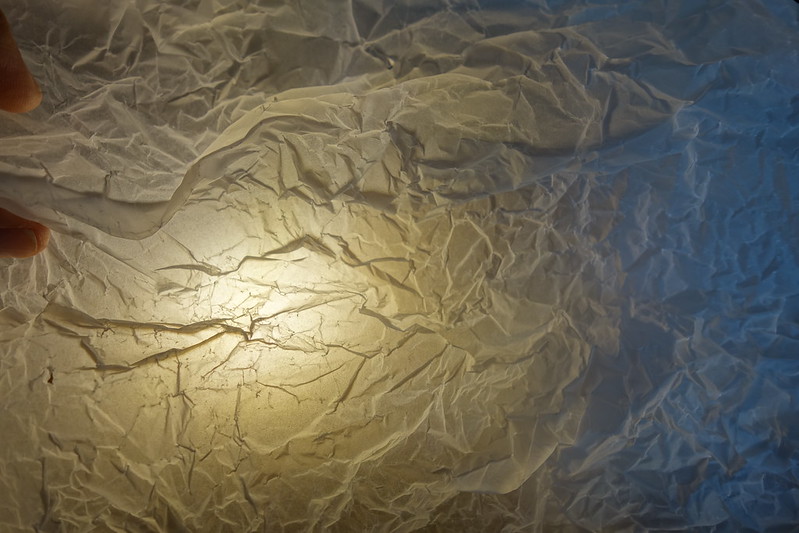
this course is part of the contemporary puppetry department program at the university of performing arts Ernst Busch berlin. #paper-adventures mit hannah perner-wilson & julian jungel im gestaltungsprojekt 2021 begeben wir uns auf abenteuerreise mit paper & elektronik. wir wissen nicht wohin uns diese reise führen wird, aber wir werden den weg dorthin gut dokumentieren, […]
What is Variables?
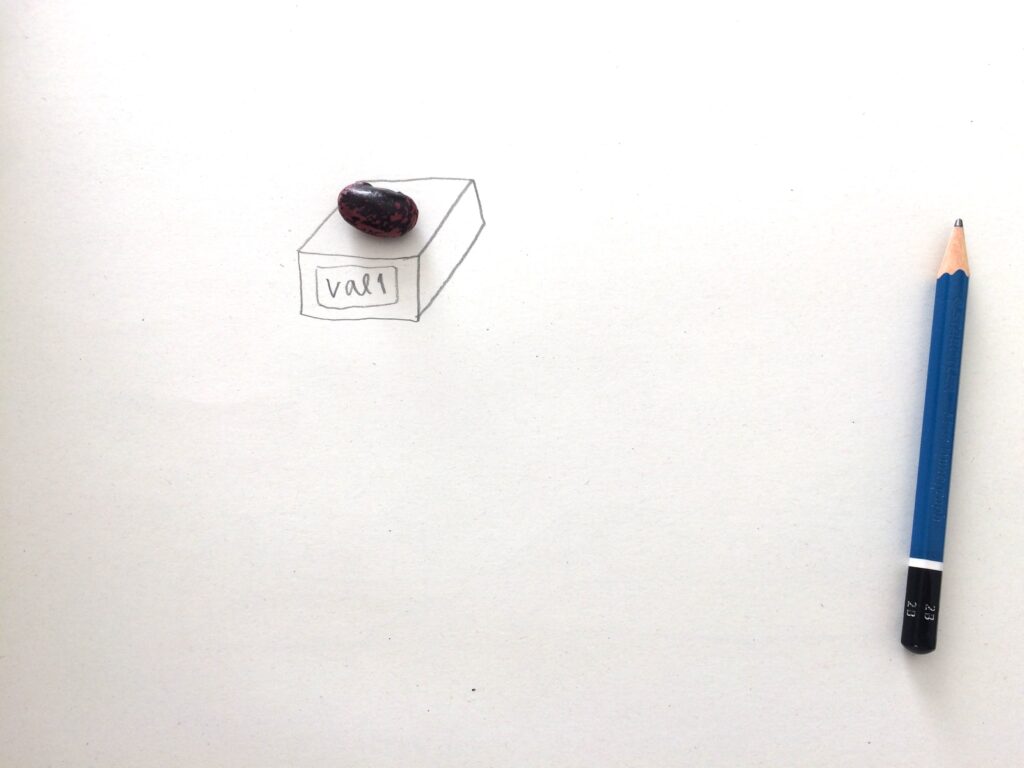
When starting to learn programming, one of the concept that is hard to grasp (it was hard to grasp for me…) is “variables”. “In computer programming, a variable or scalar is a storage location (identified by a memory address) paired with an associated symbolic name, which contains some known or unknown quantity of information referred […]
Bits and Bytes Binary numbers

Computers and microcontrollers internally represent numbers (and all the data) with 0 and 1. This is because these chips are made of a lot of switches that has two states ON (1) and OFF (0). If you look at the historic photos of early computers you will see a lot of switches and operators manually […]
Paper + Aluminum foil pressure sensor
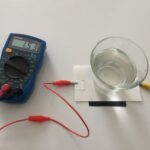
This is a quick way to prototype pressure sensor with velostat/ESD foil. You will need a piece of velostat/ ESD foil, Aluminum foil, a sheet of paper, stick glue and scissors. (the photo below does not include velostat!) In this example, I am using 5cm x 5cm piece of velostat. The size and shape could […]
Paper + Aluminum foil contact switch
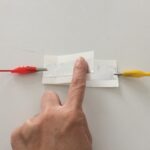
This is a paper contact switch made with a piece of paper and aluminum foil. You will need a piece of Aluminum foil, a sheet of paper, stick glue, scissors. If you do not have stick glue, you can also use any sticky tape. Cut out strip of paper. this will be a base shape […]
My First Arduino Connection Check

When you first start working with Arudino, you can do the following to check if you computer connects with Arduino Connect your Arduino with your computer through USB cable. Open your Arduino IDE (download from here), and open blink example sketch from File/Examples/Basics/Blink. It will open a Blink sketch window From Tools/Board choose Arduino Uno […]
Weigh, Measure, Count

This workshop is held as a part of the semester project course “Weigh/Measure/Count” at the Weissensee Art Academy Berlin during the Summer Semester 2021. You can use electrical sensors to measure, count and weigh objects or environment. These sensors often use unique properties of materials, that changes its electrical property like resistance, capacitance, luminescence.. when […]
Everything is Talkative

We like to embed electronics in everything these days, and while we’re at it why not include wifi so that everything can communicate with everything via The Internet. This is a short introduction, as part of a 2-day workshop, to how things are talking with each-other using electricity. how things are talking with each-other using […]
Light Dependent Relationship
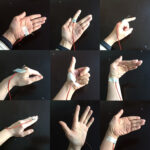
This workshop is a part of a course UltraTools at the Product Design department of the Weissensee Art Academy Berlin, held on April 19th and 21st 2021. Designing Interaction How you interact with an object/ device and how it responds to you is a big part of how you perceive the object. For example: If […]
S01E02 metal wrapped threads
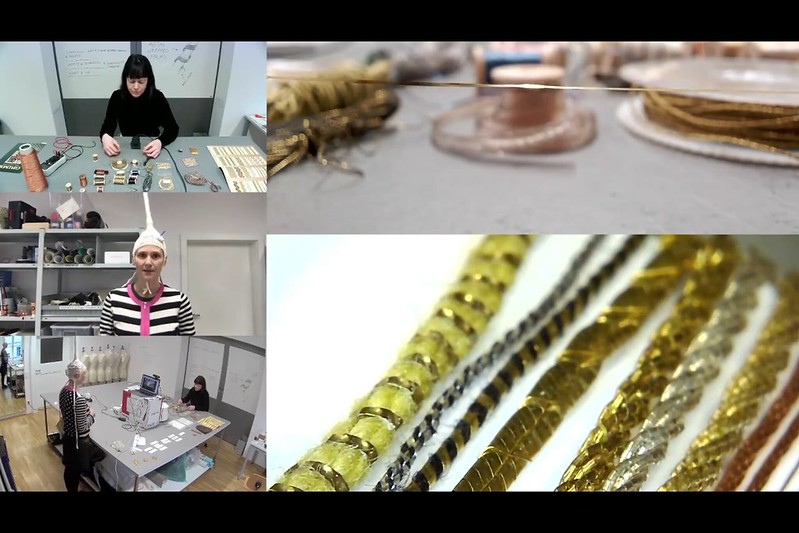
see also our post on Meet the Mateirals of Electronic Textiles >> https://www.kobakant.at/DIY/?p=8012
S01E01 steel and wool fibers
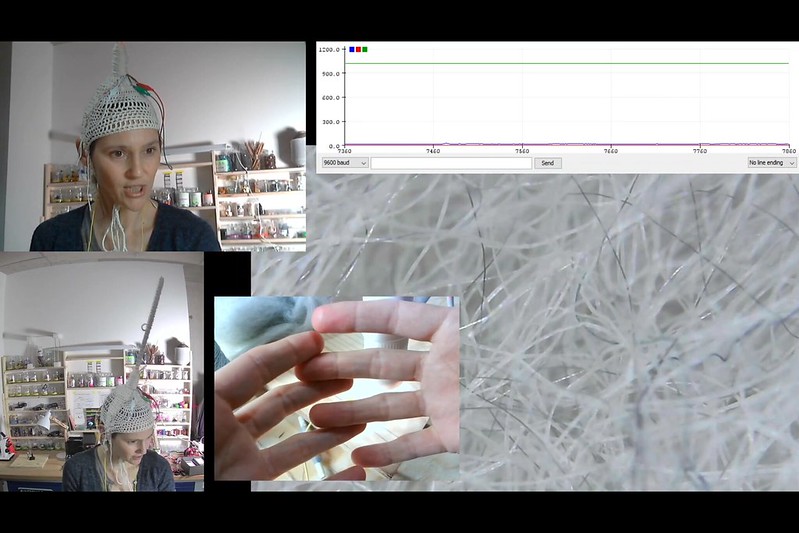
see also our post on Meet the Mateirals of Electronic Textiles >> https://www.kobakant.at/DIY/?p=8012
interested sensor #2

read more >> http://etextile-summercamp.org/swatch-exchange/interested-sensors/ interested sensor #1 >> https://www.kobakant.at/DIY/?p=8770 photos >> https://www.flickr.com/photos/plusea/albums/72157719264482974
interested sensor #1

read more >> http://etextile-summercamp.org/swatch-exchange/interested-sensors/ interesse = inter as ‘between’ + esse as ‘be’ = to be between Interested sensors are sensors expressing their interest in things without knowing in advance why the things are of interest. The process of making and using the sensors is the act of discovering what is interesting. Interested sensors are […]
multimeter hat

this multimeter hat allows me to visualize the conductivity of a material i’m holding in my hands. the only problem is that i can’t see the visualization myself since it happens ontop of my head. thus i rely on the faces of the people looking at me, interpreting their reactions. the tip of this hat […]
extreme knobbly knee sensor

as you can see the knob of this knee is so extremely knobbly that is detaches from the knee almost completely. the result are unique sensing properties that include being able to tell which direction the knob is knobbling. based on the same construction as the interested sensor nr2 but connecting to different pins of […]
soft walk socks

a pair of socks for soft walking and drawing while walking. pressure sensors under the heel and toe regions of both feed sense the steps being taken. a knit stretch sensor on the elastic band that connects the feet senses the force and size of your steps. an ESP32 and powerbank are housed in a […]
soft soft

This workshop is part of a course at the Ernst Busch Hochschule in Berlin. It is only open to students of Spiel&&Objekt. SOFT TECHNOLOGIES FOR SOFT BODIES is a 2week course and a place for *making-believe* that SOFTness is the solution to our HARD problems. we will set ourselves up to indulge this fantasy so […]
lulu masks

Bare-bones thick copper wire circuitry that doubles as both structural frame and circuit traces. And the Lulu Bumblebee optic-fiber connector PCB works great for soldering to the thick wire! Flickr set >> https://www.flickr.com/photos/plusea/albums/72157677471035377 i scream your scream >> https://www.plusea.at/?p=7346 mask option 1: mask option 2: mask option 3: Initial sketches for the masks: RELATED WORK […]
Voltage Divider with Arduino
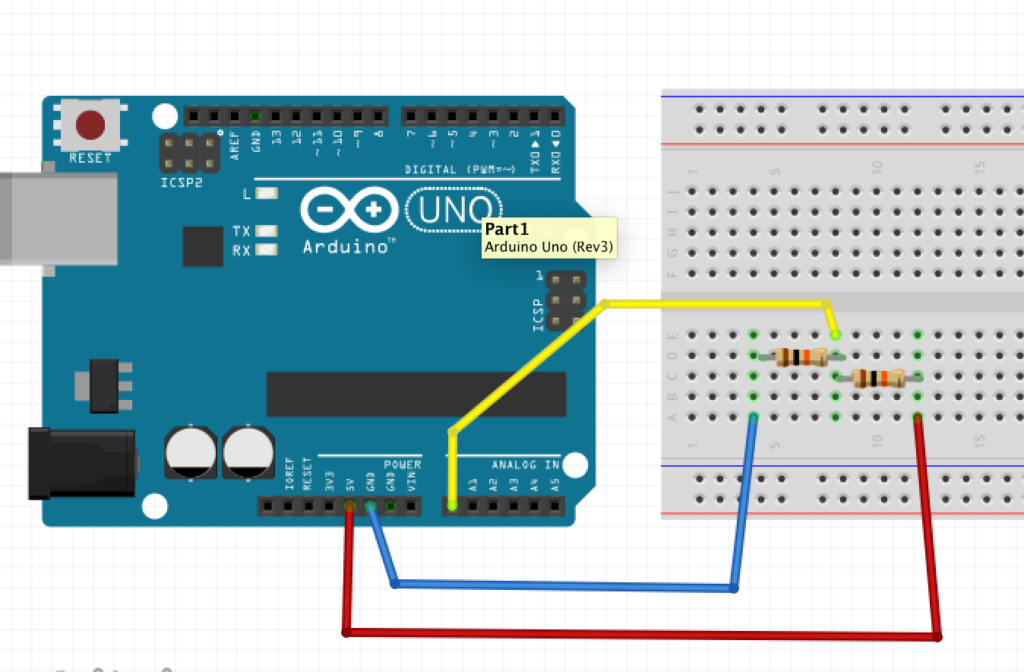
You can divide the voltage with 2 resisters. The voltage gets divided according to the ratio between the 2 resisters. Let’s make an experiment. Here, 5V is divided with 2 resisters. both of them are 10k ohm, so ratio 1:1. I connect the middle to A0, which we are reading with the current code on […]
I AM Learning
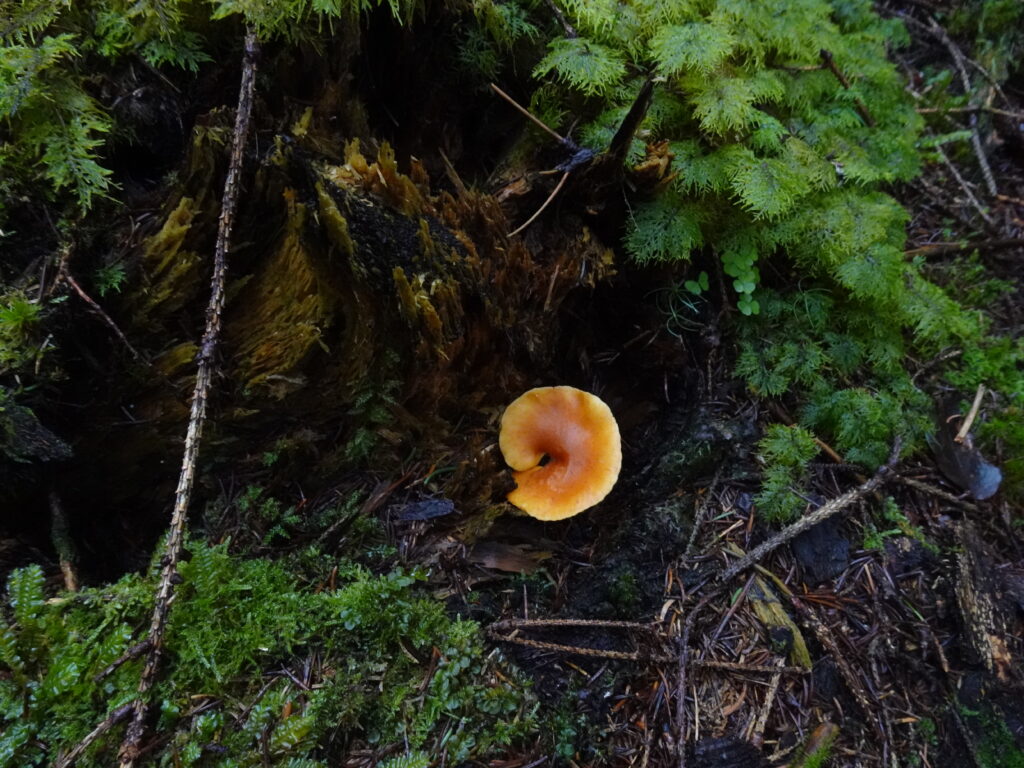
This is a course note and a documentation of the 4 day workshop at the Interface Culture, Kunstuniversität Linz, Austria. The course takes place from January 26 – 29, 10-17:00 Online. The course is given only to the registered students at the Kunstuniversität Linz. AI and Machine Learning is any longer the technology that belongs […]
Making Soft Noise

In this 2 days online course, we cover the basic introduction of Arduino, how to connect and read e-textile sensors and how we can use them to control sound synthesis with Arduino. Starting to work with Arduino Connect your Arduino with your computer through USB cable. Open your Arduino IDE (download from here), and open […]
Kinesiology Tape bend sensor
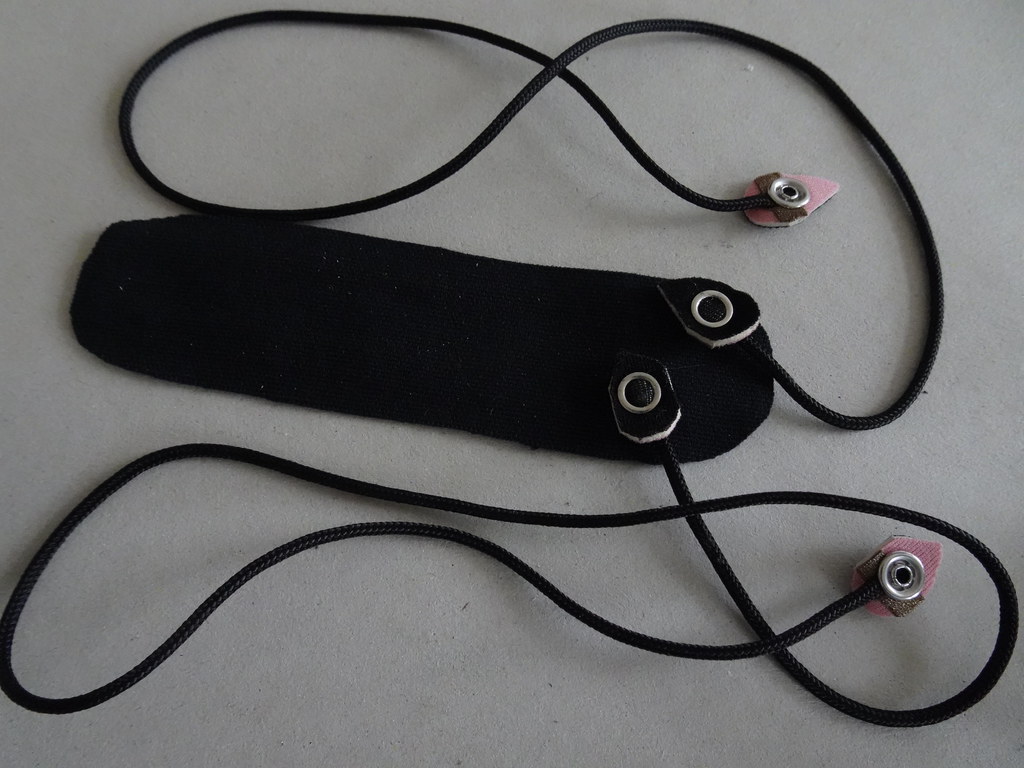
When prototyping quickly and rehearsing with performers to test out different sensor placement set-ups, I do not always have time to create whole sensor garments. I learned about this kinesiolosgy tape from a fried who had a muscle injury. The tape is made so that by taping on body directly it supports and massages muscle. […]
crochet crotch lemon
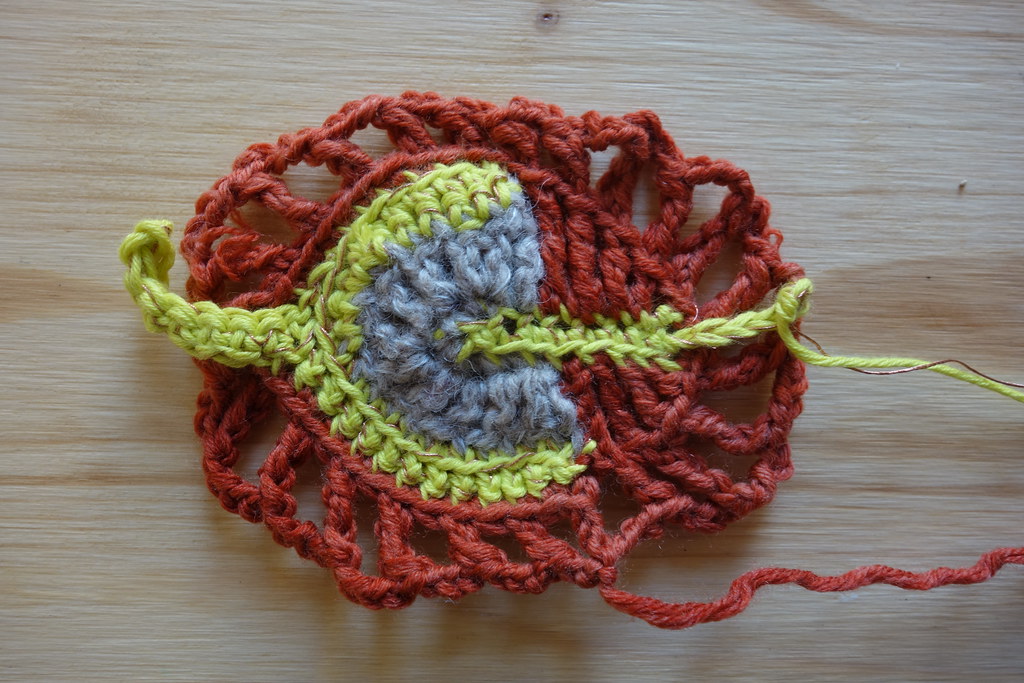
i learned the term “crotch lemon” from rachel freire. a lemon shaped insert to the crotch to avoid wear and tear from leg movement…. the perfect position for a sensor! i made this sensor as part of the goooch suit:
under the influence
_______________MATERIAL_ADVENTURES_______________ ………………the boardgame adventure for humans and other materials LEVEL2_ THE REMAKE you set off on a journey with another material you wish to make with . the goal is to return with an understanding that you are equally remade . As etextile practitioners we engage with other conductive materials on a regular basis and […]
ETextile Swatch Exchange 2020
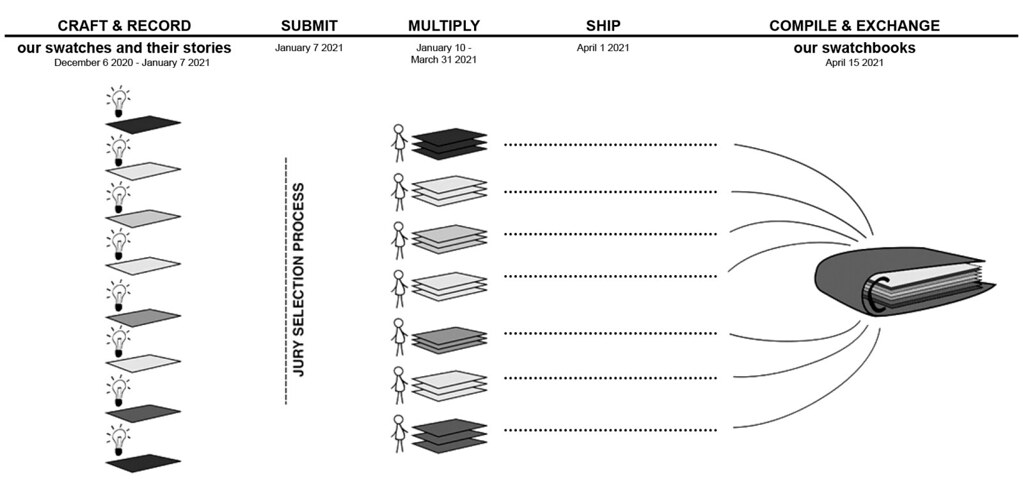
What have you been up to this past year? A wide open call for samples of your etextile craft _deadline: January 7 2021_ At the end of a year in which the diverse measures taken to live with the covid virus have changed the ways in which we are able to be together with other […]
least likely

This workshop is part of a course at the Ernst Busch Hochschule in Berlin. It is only open to students of Spiel&&Objekt. least likely scenario is a 3week course that introduces how computers work and immediately challenges you to imagine how we could interact with them differently.
connecting bubbles
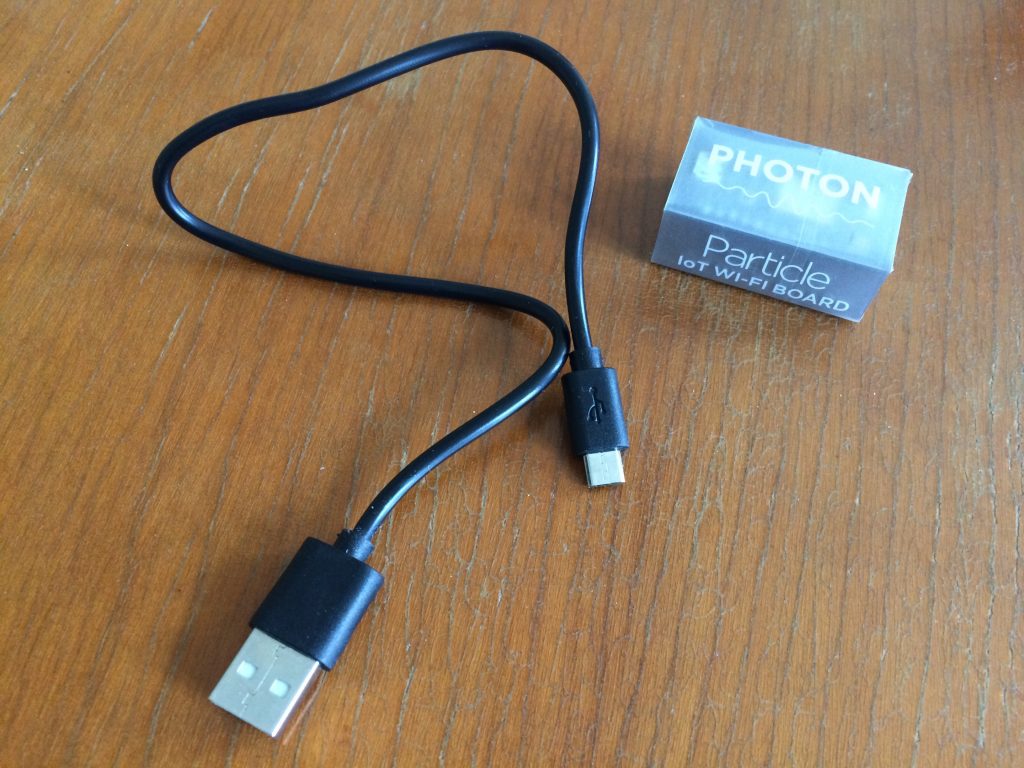
This semester, we are sitting in a strange bubble at home. No casual coffee with your friend between the lectures, no physical exchange of cool weaving trick to speed up your assignment, no hugging, no kissing… Instead of crying over all the things we lack, we can try to use the situation positively, as a unique experience of being isolated, connected only (or mostly) via internet with your friends and colleagues, but somehow share the experience together. Perhaps this is a chance to think about how we can design such an online, remote, yet connected experience. This is my proposal for this semester.
DON’T TOUCH, MOVE
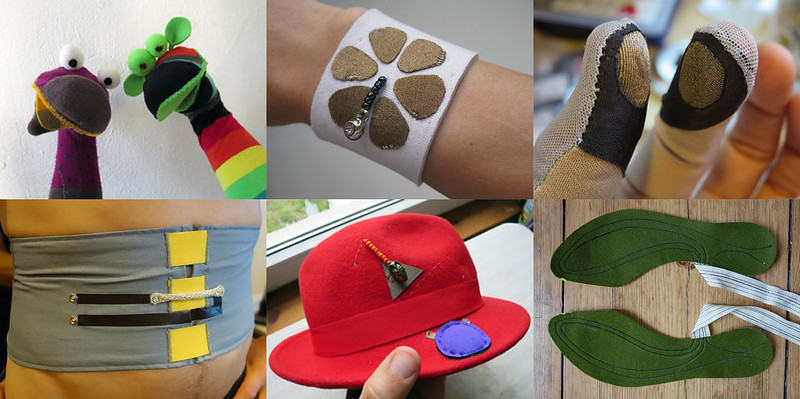
6 really wearable sensors The textile sensors on our website are often not designed to be manipulated with your hands. In an attempt to move away from manual control, towards bodily entanglement, this post shows 6 wearable textile sensors that are designed to be worn on different parts of the body. The idea being that […]
soft interactive technologies

This is a course note for the Soft Interactive Technology course at the Art Academy Weissensee Berlin. The course is normally given as a series of hands-on workshops, but due to our difficulty of meeting each other in physical spaces, it is developed as an online course for the year. It was first given in […]
#e-textile-adventures

This workshop is part of a course at the Ernst Busch Hochschule in Berlin. It is only open to students in the departments of Contemporary Puppetry and Spiel&&Objekt.
Sole Sensing

Rather simple way of making insoles with 3 pressure sensors located at different pressure points of the foot on the ground. The entire circuitry is sewn with conductive thread on sewing machine. The piezoresistive (pressure sensing) material is taped in place until finalized and can then also be sewn in place by machine (with regular […]
Vibe Modules
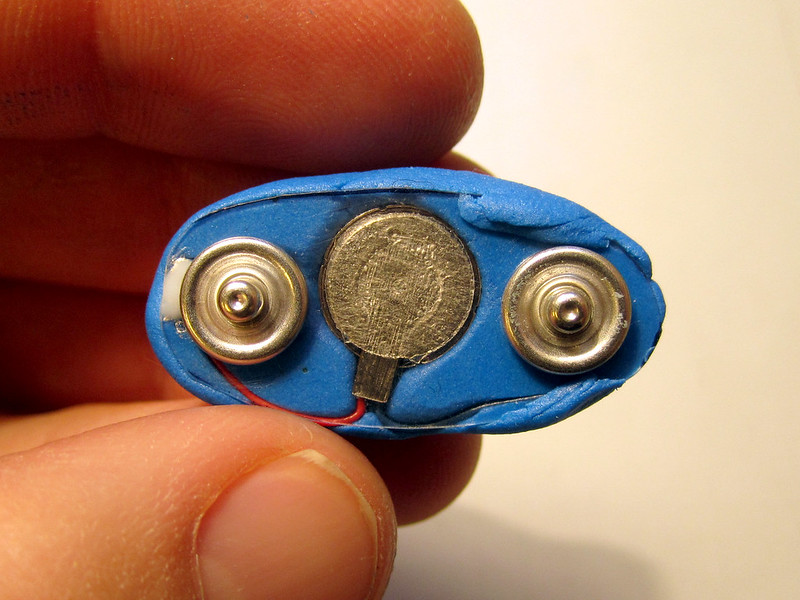
How many times I’ve made various little vibration-motor break-out modules like these so that they can be snapped into wearable projects….. Using either Sugru silicon or Shapelock/polymorph/friendly plastic/thermoplast…… or casting resin ontop.
from SPACE to SPACE
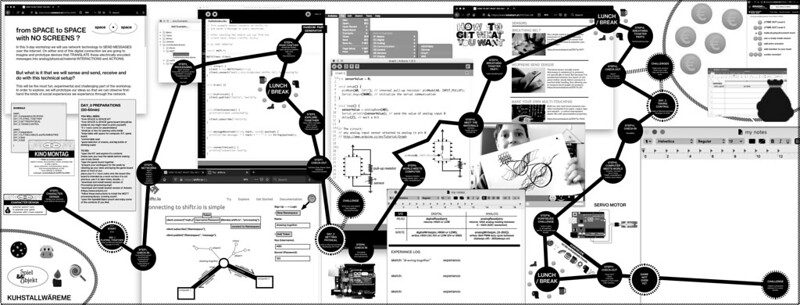
with NO SCREENS? 5. – 7.05. & 12. – 14.05. 11:00 – 13:00 & 14:00 – 16:00. This workshop is only open to S&&O students This workshop was born out of the social distancing restrictions we are practicing to delay the spread of the corona virus. It is an attempt to teach a very materials […]
OPEN CALL: Study eTextiles and Play

Come study eTextiles in the context of play, theater, participatory performance, storytelling and material puppetry in Berlin! In march 2020 Hannah started a new job, and is now professor in the masters program Spiel&&Objekt (Play&&Object), situated in the contemporary puppetry department of Berlin’s performing arts university Ernst Busch. It’s a new program and our first […]
VOLTAGE DIVIDER worksheet
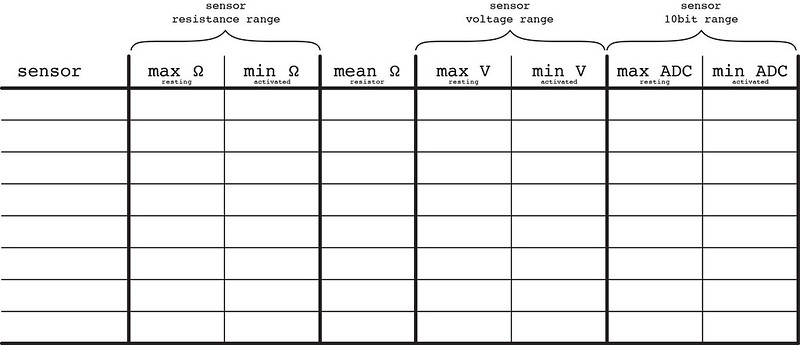
A worksheet for taking note of: The electrical resistance range of an analog sensor (Ohm). Picking a mean resistance in that range. Using a resistor of that resistance to build a Voltage Divider that will translate resistance into voltage. Taking note of the min and max voltage range this gives you. Connecting this variable voltage […]
Breathing Belt

Very simple solution for capturing the movement of the chest or stomach breathing using a stretch sensor knit from a stainless-steel & polyester yarn “sensor yarn”. Photos >> https://www.flickr.com/photos/plusea/albums/72157713915361228 HOW THE SENSOR WORKS The stainless steel fibers in the yarn are short, and the electrical resistance between them is high (when relaxed <1M Ohm). And […]
Textile Summer School in Kyoto Japan

FYI: Open call for KYOTO Design Lab Textiles Summer School 2020 is out. The deadline is on the May 7th. https://www.d-lab.kit.ac.jp/events/2020/tss-2020/ It is the midst of crazy situation, and it maybe hard to think of the summer now… But if you are interested in visiting Chirimen weavers in Kyotango, one of the Japan’s traditional textile […]
Material_Adventures

the_boardgame This workshop-as-boardgame was developed during corona times as a means of teaching remotely with as little screen-time as possible. #noscreens MaterialAdventures >> https://www.plusea.at/?p=6605
Making and Animating Dioramas
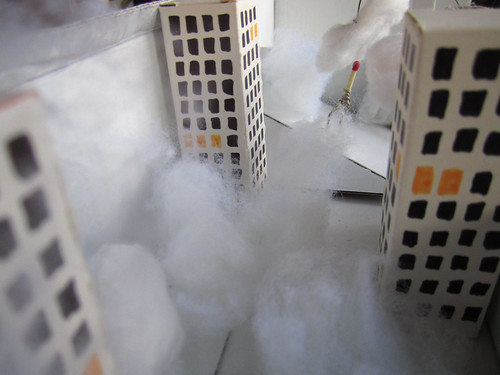
This workshop is only open to students of the Spiel&&Objekt master program at the Ernst Busch Hochschule in Berlin.
Donut Pot

A potentiometer, a potential devider, with the resistive track as the big donut and the conductive wiper as the small donut.
Sewn USB Plug

USB plugs are surprisingly easy to make yourself. You might have already seen some versions made directly on a PCB – either milled or etched (or scraped by hand) from copper laminated FSR board. But you can also sew a USB plug with some thick conductive thread (or wire) and some wood in which you […]
FT1: Moving Fabrics with Electrons

January 2020, hosted jointly by Interface Cultures and Fashion and Technology departments at the Art University Linz, Austria * * * This workshop is only open to Art University Linz students. Students should only sign up for this course if they can commit to attending the full schedule (see bellow). * * * In this […]
Flapping Wings
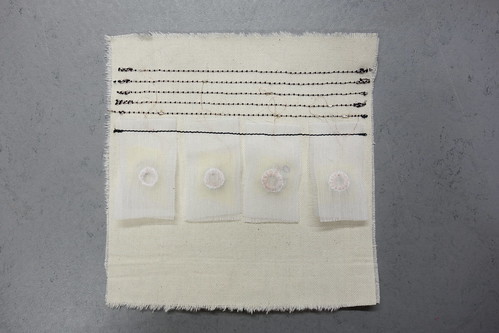
Multiple of these: Flapping Wing Swatch Example >> https://www.kobakant.at/DIY/?p=5900
Fabric Flipdot with H-Bridge
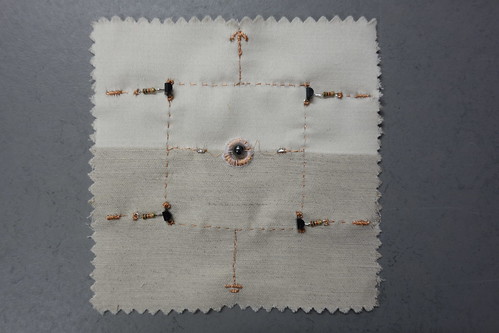
H-bridge circuit diagram: Flipdot mechanism: Super simple with single transistor flips one direction only: With h-bridge circuit build on breadbaord (2 NPN transistors, 2 PHP transistors): MAKING-OF
Spekulative Objekte

18 Nov – 6 Dez 2019, course taught by Clemens Winkler and Hannah Perner-Wilson at Spiel & Objekt Hochschule für Schauspielkunst Ernst Busch Photos >> https://www.flickr.com/photos/plusea/albums/72157712439878226
ETextile Tester Bracelet

Photos >> https://www.flickr.com/photos/plusea/albums/72157712300020868 HANDOUT English Handout Text eTEXTILE TESTER BRACELET Explore the world of electronic textiles! The eTextile Tester Bracelet is a tool for testing the conductive properties of materials. The bracelet itself is an electronic textile: a felt band with a soft circuit sewn into it. Wearing and using this simple tool becomes means […]
Meet the Materials

ETextiles rely on the existence of electrically conductive fibers, threads and fabrics that can be used in combination with textile techniques such as sewing, weaving and knitting. Most of these conductive materials are produced by industry for anti-static and EMF shielding purposes. The development and production of materials for crafting soft circuits and sensors is […]
Shape and Memorize
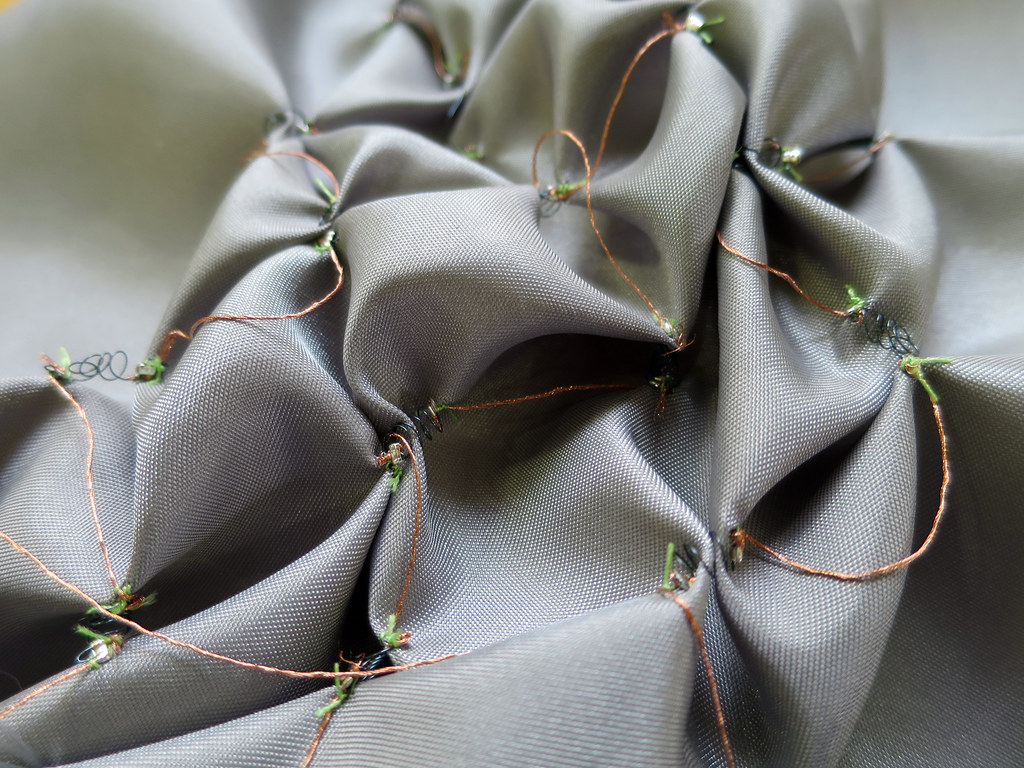
This is a 4 days workshop at the Weissensee Art Academy Berlin as a part of the Textile and Surface design course. The workshop will take place from December 9th to 13th. In this workshop, we will look into using Shape Memory Alloy (SMA), understanding the basics of SMA, how to set/memorize the shape, how […]
Graphing and Drawing Sensor Values

CODE EXAMPLES ARDUINO Single Analog Sensor Value Smoothing a Single Analog Sensor Value Multiple Analog Sensor Values Smoothing Multiple Analog Sensor Values ARDUINO —> PROCESSING Graph Single Analog Sensor Value in Processing Graph Multiple Analog Sensor Values in Processing ARDUINO Single Analog Sensor Value Examples: Communication –> Graph This example contains the code you need […]
Super Stretchy & Robust Conductor

This is NOT a stretch sensor, but rather the opposite, a way of making a stretchy connection/lead/trace. A tube knit from conductive thread with round elastic inserted. Before finishing the ends, the knit tube is stretched to it’s max and elastic’s max stretch (or other max can be taken) and then fixed. You can work […]
Felted DIP socket

When using microcontroller for embroidery circuit projects, sometimes you do not want to directly solder them on the embroidery as you need to take it out to change the program on it. For this, sockets are convenient, but it is also bulky on the fabric. I used 5mm felt, that is as thick as the […]
Stories from an etextile tailor

(German version bellow) Stories from an e-textile tailor Make your tech and wear it too! In this talk I’d like to give an introduction to the materials, tools, skills and energies involved in making electronic textiles and tailoring wearable technology, which has been my practice for the past 13 years. I spend my days crafting […]
pressure matrix code + circuit
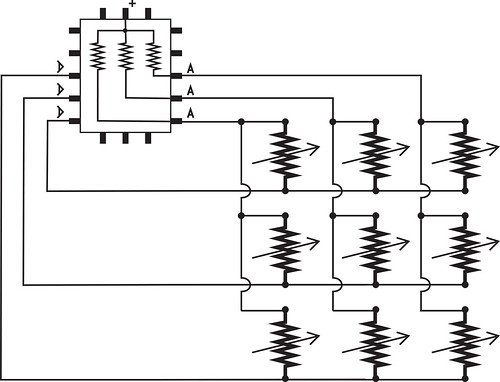
In this post I want to try and explain how a pressure matrix built from conductive rows and columns with a piezoresistive material (Eeonyx, Velostat) in between works, how to wire it up to an Arduino and write the Arduino code that will parse through the rows and columns to read the individual pressure points […]
Taking Parts Apart Workshop at TH Nürnberg
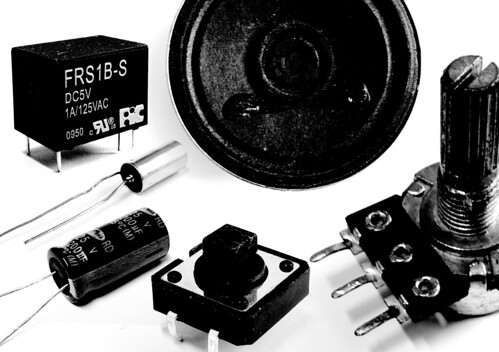
11 December 2019, 15-18:00 at TH Nürnberg, Germany Download PDF documentation of outcome >> http://kobakant.at/downloads/PDFs/20-takingPartsApart_THnurnberg.pdf Photos >> https://www.flickr.com/photos/plusea/albums/72157712797821188 A hands-on exercise in getting to know the electronic parts that make up the technologies we use every day. After understanding how they work, can we re-imagine them to be made in different ways? Links: >> konp.plusea.at/ […]
ohm’s law
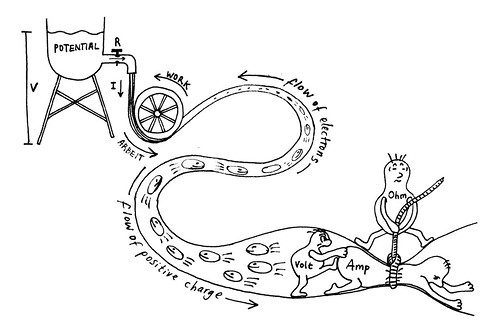
An attempt to combine three iconic illustrations of ohm’s law into one: annotated in german (english coming soon): ORIGINALS: the best: forrest m. mims Getting Started in Electronics >> https://docs.google.com/file/d/0B5jcnBPSPWQyaTU1OW5NbVJQNW8/edit the water analogy:
Tester Tool: bracelets

A simple LED circuits with an interrupted connection that can be worn as a bracelet.
Critical Critters

A collection of simple circuits (power, actuator) that are missing a part of their connection. Intended for visualizing the effects that variable resistive sensors have on the amount of voltage that reaches the actuator.
Button Lights
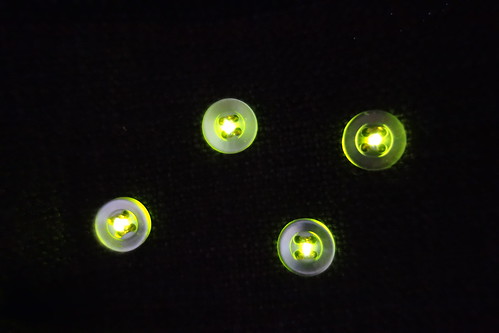
Three techniques for mounting LEDS on top of buttons. 1 sew buttons with a solderable conductive thread and solder LEDs afterwards to the thread. 2 prepare button with copper tape and solder LED first and then sew to make contact to the copper tape pads. 3 same as 2 but mount LED underneath button facing […]
– faser – faden – fiktion –

October 2019 – January 2020, a course in the department of Gestaltung: Technik-Textil at the Kunstuniversität Linz, Austria This course is only open to students of Gestaltung: Technik-Textil. This course pursues an exploratory approach to introducing electronic textiles (E-Textiles) as a material practice. Taking the analogy of an expedition, students will depart on a journey […]
Spinning Sensor Yarn

A little goes a long way. Stainless steel fibers blended with wool roving and spun and plied on on a drop-spindle. Photos: https://www.flickr.com/photos/plusea/albums/72157711023086991 This is not a recipe but an attempt to share things to think about when you approach spinning your own conductive yarn. Or “sensor” yarn in the sense that it’s electrical conductivity […]
Hydrogen Peroxide Etching

Hydrogen Peroxide Etching Conductive Fabric. Part of a counterchemists collaboration. Photos: https://www.flickr.com/photos/plusea/albums/72157710980633483 copper riptstop: silver lycra (front): silver lycra (back): silver lycra (stretched): materials: High acidity vinegar (24%): look in the cleaning section of your local supermarket for vinegars used in cleaning. Hydrogen Peroxide (Wasserstoffperoxid Lösung) 30%: ask at your local pharmacy and let them […]
Speculating about Piezoresistance
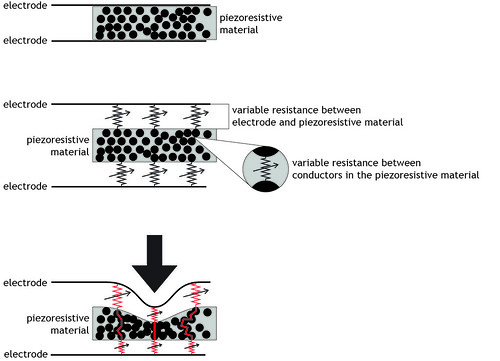
Together with Maurin we have been wondering what exactly goes on inside a piezoresistive material – or where the piezoresistive effect takes place. >> https://en.wikipedia.org/wiki/Piezoresistive_effect Ideas for why/where changes in resistance are happening by Maurin Donneaud: The information I bring here comes from my intuitions that I have not yet had the time to confirm […]
Tie-Poly Leggings and Dataglove

A pair of leggings and a glove made conductive (with piezoresistive properties) via a technique of polypyrrole polymerization, using tie-dye technique to create areas of non-conductivity.
Poly Resist Techniques: tie and wax
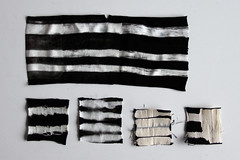
Two techniques for resisting In-Situ Polymerization of fabrics: “Tie-Poly”: tie-die binding Batik: application of hot wax Part of a counterchemists collaboration. Photos >> https://www.flickr.com/photos/plusea/albums/72157710354823622/page4/ VIDEO “Tie-Poly” Tie-dye is a technique of binding off parts of a fabric in order to prohibit the water dye from penetrating into these regions. Scrunching the fabric and tying string […]
In-Situ Polymerization

Part of a counterchemists collaboration. Photos: https://www.flickr.com/photos/plusea/albums/72157710884689521 Polymerization of PolyPyrrol materials: Pyrrol Polymerization agent tools: DIY Magnetic Stirrer https://www.instructables.com/id/Easy-DIY-Magnetic-Stirrer/ POLYMERIZED FABRICS: Knit Viskose – 95% viskose, 5% elastan Knit Bamboo – 95% bamboo, 5% elastan Shieldex® Technik-Tex P130 – 78% Polyamide, 22% Elastomer, 99% pure Silver Powermesh – 82% nylon 18% spandex Shieldex® Kassel – […]
Needle Felt Squeeze Sensor
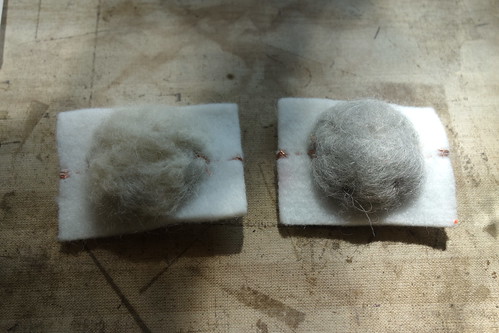
A Pressure Sensor made with conductive wool. You can mix a bit of wool to increase the range of resistance change.
TEXTILE ACTUATOR BOTS

Three robots encased in clear tupperware as an easy means of experiencing how textile sensors can be used to control textile actuators (well the LED BOT is not really a textile actuator – but could use fibrous stuffing to diffuse the light!) Textile LED Bot Textile Servo Bot Textile Speaker Bot Textile LED Bot Textile […]
Lulu as 4-Way Adapter
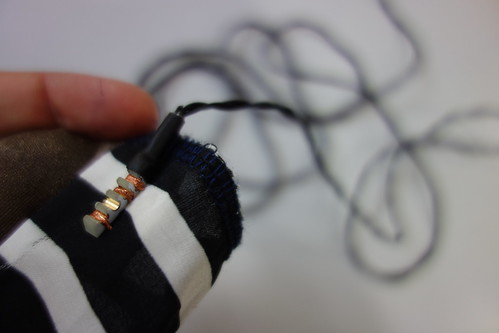
Instead of soldering the LED to the tip of the Lulu BEE you could solder the ends of 4-wires to the pads on the PCB. Thus the Lulu becomes a 4-way e-textile to wire adapter… connector… breakout…
Pin Pot

A lengthy pin potentiometer. Something like a slug on the back of your hand. Filled with polenta. You poke the sharp pin through layers of conductive fabrics (and the polenta), one is highly conductive the other has lots of resistance. The pin is conductive and makes an electrical connection from the conductive wiper layer to […]
Crafting Sensory Surfaces
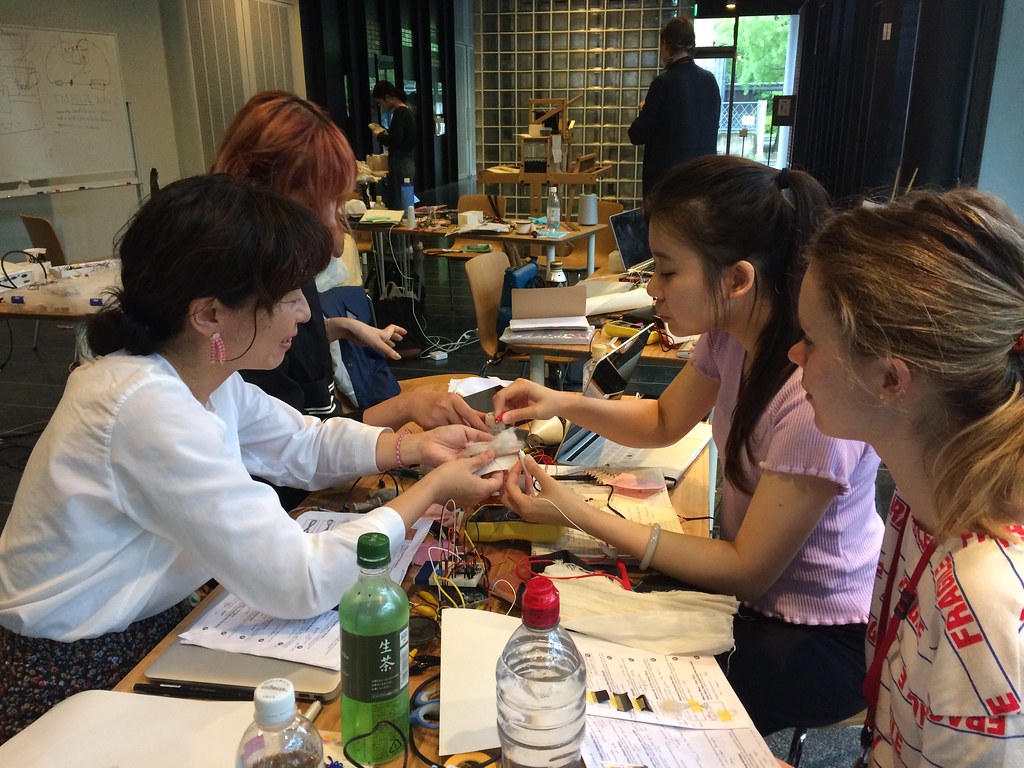
A part of textiles summer school at DLAB KIT Kyoto Japan. August 19 – 30, 2019 Textiles stand at the forefront of material technology offering a staggering range of characteristics for designers to exploit: touch, fold, stretch, stroke, squeeze, scrub, etc. We manipulate textile surfaces that surround us in various ways. By embedding e-textile materials […]
ETextile CARD10
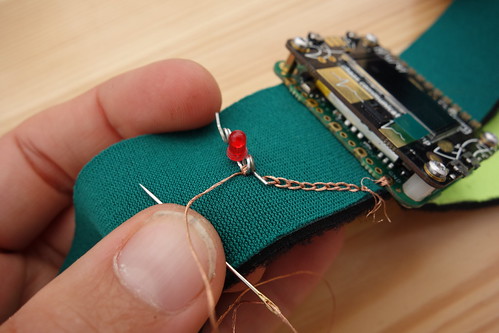
ccc camp 2019 Extend your CARD10 wristband out into the world….. of etextiles! friday, 22-8-19, 19:00-20:30 in the CARD10 village saturday, 23-8-19, 18:30-20:00 in the CARD10 village >> https://card10.badge.events.ccc.de/en/workshops/ bring (if you have): – your CARD10, USB-C cable, laptop – “normal” LEDs – scissors – pliers – sewing needles step-by-step: More photos: https://flickr.com/photos/plusea/albums/72157710505658161 STAGE 1: […]
Absurd Musical Interfaces

8-9 November 2019, Queen Mary University of London Artists, technologists and makers are invited to take part in a hackathon around the themes of absurd musical interfaces, questionable sonic interactions and unworkable music designs. Does this sound fun to you? Please, join us! Application Deadline: 8 September 2019 >> http://instrumentslab.org/research/absurd-music-design.html


